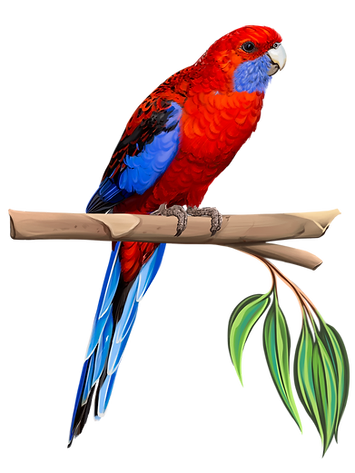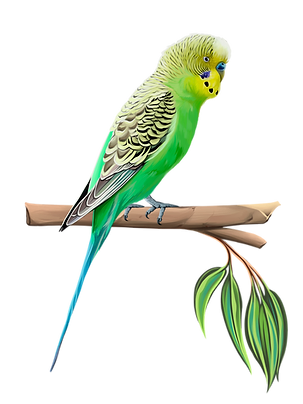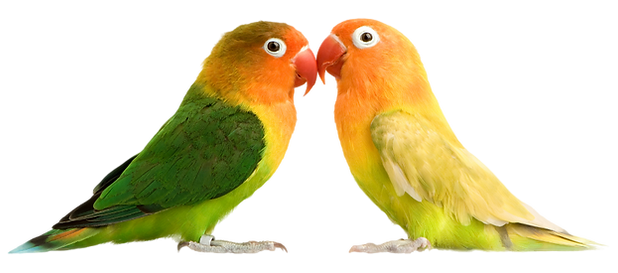patience and sensitivity
In the case of budgerigars, lovebirds, cockatiels and other small parakeets, finches and canaries, in contrast to larger parrot species such as african grey parrots or macaws, a conversion is usually more time-consuming but worthwhile.

It is therefore important to allow free choice. The aim is to let the smaller birds choose for themselves and gradually get them used to the new food. Access to fresh and clean water must always be available as some smaller species tend to drink more water than before during the transition process.
Most parakeets such as budgerigars, cockatiels, Bourke’s parakeets, grass parakeets, rosellas or other Australian species feed primarily on the ground. Therefore, the new extruded pellets should not be offered at different feeding places, as is the case with parrots, but at their usual feeding place.

1. Method
Add our Vital Pellets to your previous food so that the parakeets lose their shyness of the new food. At first they can choose what they want to eat. If they are already eating the small pellets, you can start reducing the seeds step by step. Patience pays off, because even smaller parakeets can live to a ripe old age if they are well fed. Make sure your bird is eating enough. Regular weight checks can give you confidence that your bird is at an ideal weight. We recommend that you have a health check with your vet before making the switch.

2. Method
Preparation of an alternative mash:
Grab some of our pellets and some millet or whatever seeds your parakeet loves to eat.
Grind the extruded pellets in a blender/mortar or grind them up in a bag.
Mix the millet seeds with the small pellets and enough warm water to form a paste (50% pellets / 50% water).
The goal: to guide the bird through the porridge to the seeds in search of its favorite food. In doing so, he takes an ever-increasing share of the pellet mash and gets used to the taste and color. It is important to him to get the coveted seeds. He forgets the new food and gets used to it himself.
This method works well for smaller parakeets such as cockatiels, budgies, or lovebirds.
Offer your birds this mixed porridge daily as additional food and gradually reduce the main food. Remove this mixture after 4-6 hours at the latest to avoid germs.

3. Method
Combination of pellets, fruits & vegetables
Prepare a nice fresh mix of your bird’s favorite fruits and vegetables.
Now sprinkle a small amount of crushed pellets over the food so your bird will consume some of the pellets while eating their favorite fruits and vegetables.
Increase the size of the crushed pellets until you eventually reach the original size we produce.
Always remove damp or dirty pellets after 4-6 hours at the latest to avoid spoilage. Dry pellets can be left in the bowl for a few days.
Before you eliminate all seeds from the diet, your birds need to consume an adequate amount of pellets. A slight weight loss of up to 10% of body weight is normal as pellets have a far lower fat content than sunflower seeds or nuts. Once your birds have accepted a purely pellet-based diet, the consistency of their droppings may change as well. Usually this becomes much softer and more fluid. This is absolutely fine. If your bird is puffy or lethargic, contact your vet immediately.

